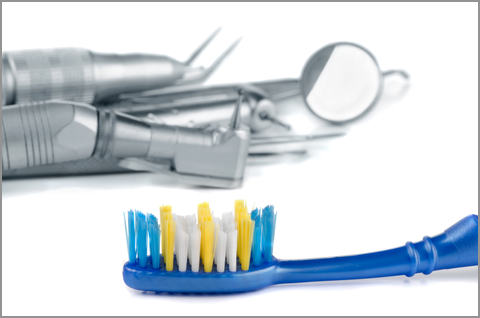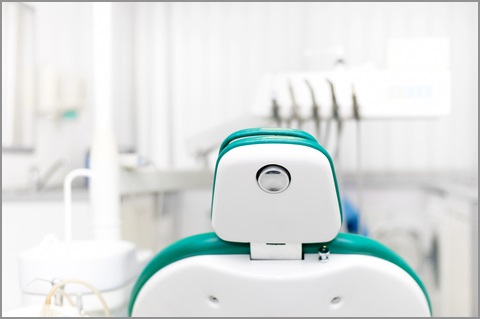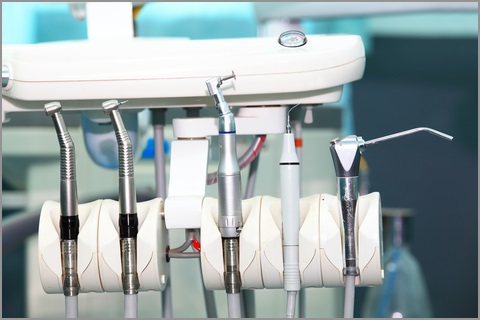Dental Services
Ahrens Family Dentistry is a family based practice offering a variety of precedures. From dental cleanings, whitening treatments, and fillings or crowns, to veneers, implants, mouthguards and nightguards, we have you covered.

 DENTAL CLEANING
DENTAL CLEANING
A dental cleaning is a professional cleaning you receive from a dentist or dental hygienist. Cleanings should be performed every six months to prevent excessive plaque buildup. Plaque left untreated can lead to unhealthy gums and tooth decay. A routine dental cleaning should include polishing, fluoride application, and dental hygiene instruction. In some cases the doctor may recommend a separate appointment for scaling and root planing.
 FILLINGS
FILLINGS
A filling is a way to restore a tooth damaged by decay back to its normal function and shape. If you have a tooth that requires a filling, the dentist will first remove the decayed tooth material, clean the affected area, and then fill the cleaned out cavity with a filling material. A filling helps prevent further decay by closing off any cracks or spaces where bacteria can enter.
There are a variety of filling materials available including resin composite and porcelain. The dentist will work with you to determine which material is best, depending on the extent of repair, where the filling is needed, and cost.
Composite resins are custom made to the exact color of your natural teeth, creating a more natural appearance. Porcelain fillings are called inlays or onlays and are custom created in a lab and then bonded to the tooth. They can be matched to the color of the tooth and resist staining. A porcelain restoration generally covers most of the tooth, making the filling nearly undetectable. If decay or a fracture has damaged a large portion of the tooth, a tooth-colored crown (or "cap") may be recommended. Decay that has reached the nerve may be treated through root canal therapy or through a procedure called pulp capping.


 TEETH WHITENING
TEETH WHITENING
Tooth whitening is a popular procedure to make teeth whiter and brighter, and therefore more attractive. Bleaching can be used to whitening stained and discolored teeth, or simply to enhance a dull smile. Either way, tooth whitening is a safe and relatively painless procedure ideal for most patients.
Our office uses a whitening treatment you can use while in the comfort of your own home, Tray Whitening. We will first take an impression of your mouth to create a customized clear whitening trays for you to wear. Within a few days your trays will be ready to be picked up and we will show you how to apply the special bleaching material to the trays. The whitening gel trays should be worn 30-60 minutes up to twice a day. At the end of this period, you will see maximum whitening results that are nothing short of dazzling. Occasional treatment can be used at your convenience to maintain your new smile.
 VENEERS
VENEERS
Veneers are a dental procedure in which a covering is placed over the outside (visible area) of the tooth. Veneers are usually only applied to the part of the tooth that is visible when talking or smiling. The procedure can be direct or indirect.
The direct technique usually involves placing composite resin on the outside of the tooth using bonding. This method is usually referred to as bonding.
The indirect technique usually involves two appointments because the veneers will be fabricated at a dental laboratory. At the first appointment the teeth are prepared, impressions taken, and the teeth are given a temporary covering. In two to three weeks the veneers are back from the laboratory, the temporaries are removed and the veneers are bonded to the teeth. The laboratory fabricated veneers are usually made using porcelain or pressed ceramic and are very aesthetic.
The advantage of veneers versus crowns is that much less tooth material is removed, and the procedure is generally less uncomfortable. Veneers are recommended for teeth that have large fillings or little tooth structure.


 Bonding
Bonding
Bonding involves adhering composite resin material that is matched to the color of the tooth. This is performed to repair damage caused by decay, to alter the alignment of the tooth, close gaps between the teeth, or for other cosmetic purposes.
First the surface of the tooth is roughened in order to accept the bonding. A gel is applied so the resin will adhere to the surface of the tooth. The composite is then placed on the tooth and the bonding agent hardens with intense light. The last step is shaping and polishing to give a lustrous finish.
 CROWNS
CROWNS
Crowns are very durable and can last a lifetime with extra care and good oral hygiene, and are used to restore and enhance teeth that are damaged or to take the place of missing teeth. A crown (also referred to as a cap) is used to entirely cover a damaged tooth. A crown not only strengthens a tooth, but it can dramatically improve a tooth's appearance, shape and alignment.
Crowns may be used to:
- Replace a large filling when there is little tooth structure remaining
- Protect a weak tooth from fracturing
- Restore a fractured tooth
- Attach a bridge
- Cover a dental implant
- Cover a discolored or poorly shaped tooth
- Cover a tooth that has had root canal treatment
It is important that a missing tooth be replaced as soon as possible. If not treated, the teeth surrounding the gap begin to shift inward. Since teeth use their neighbors for support, if one is missing they begin to "fall" and shift into the open spaces. This may worsen the bite because of the changes in pressure and can eventually result in problems with the jaw such as TMJ deviation and/or inflammation.
Crowns are made by first taking an impression of your mouth. The impression is sent to a dental lab where your crown will be custom made to fit your mouth and match your natural tooth color. A temporary crown will be placed into your mouth until your permanent crown is ready and cemented into place.

Other Services
DENTAL IMPLANT RESTORATION
After an oral surgeon has placed your implant, we perform the restoration process to give you a beautiful smile. A dental implant is an ideal tooth restoration for people who are missing one or more teeth as a result of injury, periodontal disease, or any other reason. A dental implant is a metal post that a periodontist or oral surgeon surgically positions into the jaw. Once in place and bone surrounding the implant has had time to heal, a replacement tooth is attached to the post. While implants are typically more expensive than other methods of tooth replacement, they provide superior benefits. Implants are stronger than natural teeth and generally last 10-20 years. They are also a more favorable approach than bridgework since they do not depend on neighboring teeth for support.
To receive implants, you need to have healthy gums and adequate bone to support the implant. You must also be committed to excellent oral hygiene and regular dental visits as these are critical to the long-term success of dental implants.
NON-SURGICAL GUM TREATMENT
The gums, ligaments, and bone around the teeth form the foundation for teeth. All structures are also referred to as the periodontium. When the periodontium is not healthy, it jeopardizes the teeth just as a bad foundation would threaten the stability of a house. Signs of unhealthy periodontium include: gums that are red and bleed easily, persistent bad breath, gums that are pulled away from the tooth, loose teeth, and changes in the position or bite of the teeth. With proper gum treatments, it may be possible to return gum tissue to a healthy state. If you're having a problem, come in and see us so we may treat it right away. The treatment usually involves a deep cleaning or root planing done under a local anesthetic, along with local antibiotic agents. It is important to have gum disease checked, as untreated gum disease may eventually lead to surgery or extractions of non-restorable teeth.
COSMETIC DENTISTRY
Cosmetic dentistry includes procedures correct imperfections or enhance the appearance of the mouth. Tooth color, alignment, spacing as well as regularity of the teeth are the characteristics that give the overall appearance. Any of these can be enhanced to provide a stunning new smile.
MOUTHGUARDS & NIGHTGUARDS
Custom designed mouthguards and nightguards are made of flexible plastic and molded to fit the shape of your teeth. Mouthguards are recommended to protect the jaw and teeth during physical activity and sports such as boxing, football, basketball, or other activities where your mouth may be hit. Guards also protect the soft tissues of your tongue, lips and cheek lining. Nightguards are recommended for patients who clench or grind their teeth at night as a way to protect their teeth and bite.
If you have decided a guard is right for you, we will take an impression of your teeth which will then be sent to a lab to make a custom fit guard. In most cases you can choose from a variety of colors and styles. On average, guards last between 3 and 10 years.